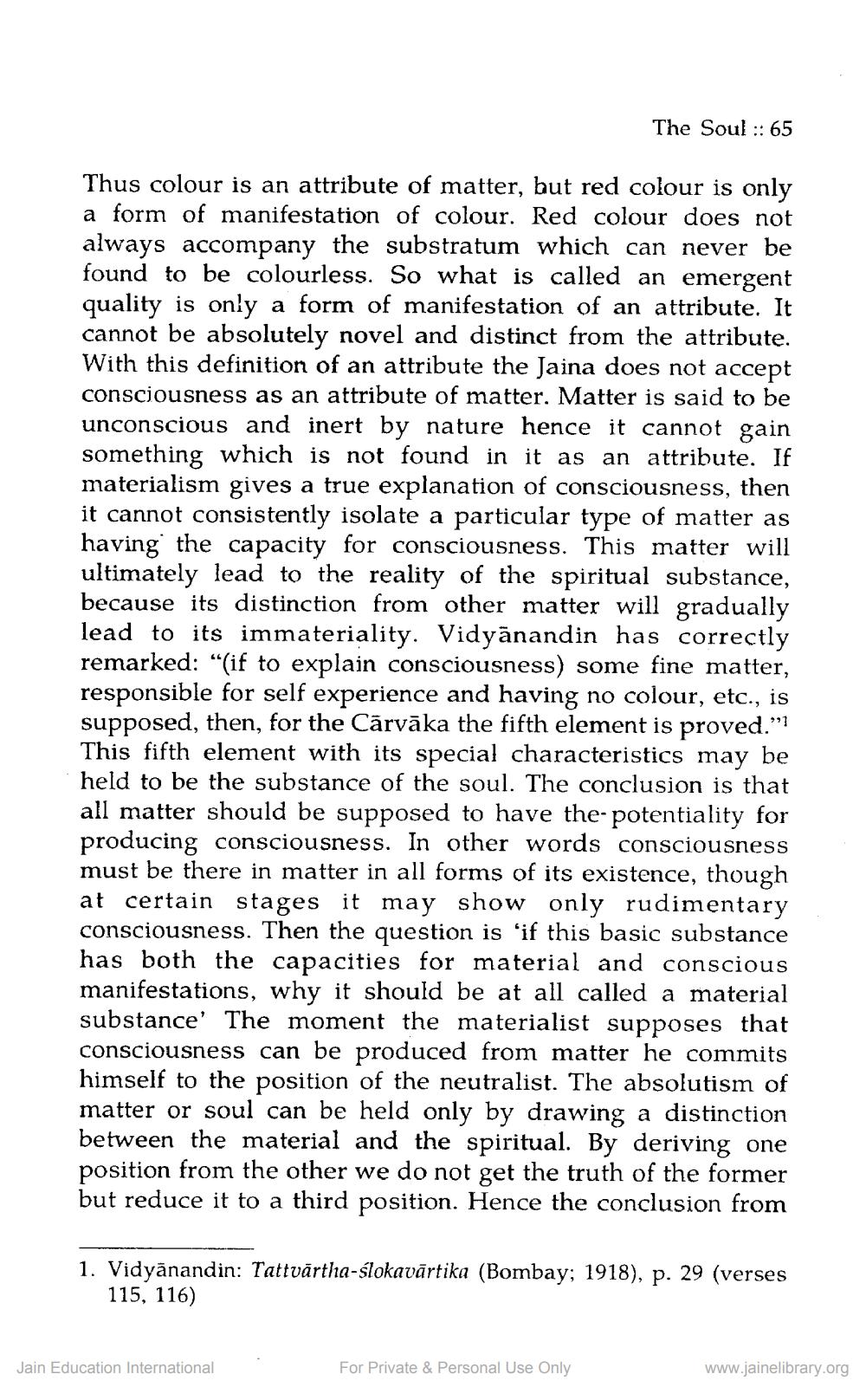________________
The Soul :: 65
Thus colour is an attribute of matter, but red colour is only a form of manifestation of colour. Red colour does not always accompany the substratum which can never be found to be colourless. So what is called an emergent quality is only a form of manifestation of an attribute. It cannot be absolutely novel and distinct from the attribute. With this definition of an attribute the Jaina does not accept consciousness as an attribute of matter. Matter is said to be unconscious and inert by nature hence it cannot gain something which is not found in it as an attribute. If materialism gives a true explanation of consciousness, then it cannot consistently isolate a particular type of matter as having the capacity for consciousness. This matter will ultimately lead to the reality of the spiritual substance, because its distinction from other matter will gradually lead to its immateriality. Vidyānandin has correctly remarked: "(if to explain consciousness) some fine matter, responsible for self experience and having no colour, etc., is supposed, then, for the Cārvāka the fifth element is proved."} This fifth element with its special characteristics may be held to be the substance of the soul. The conclusion is that all matter should be supposed to have the potentiality for producing consciousness. In other words consciousness must be there in matter in all forms of its existence, though at certain stages it may show only rudimentary consciousness. Then the question is 'if this basic substance has both the capacities for material and conscious manifestations, why it should be at all called a material substance' The moment the materialist supposes that consciousness can be produced from matter he commits himself to the position of the neutralist. The absolutism of matter or soul can be held only by drawing a distinction between the material and the spiritual. By deriving one position from the other we do not get the truth of the former but reduce it to a third position. Hence the conclusion from
1. Vidyānandin: Tattvārtha-slokavārtika (Bombay; 1918), p. 29 (verses
115, 116)
Jain Education International
For Private & Personal Use Only
www.jainelibrary.org




